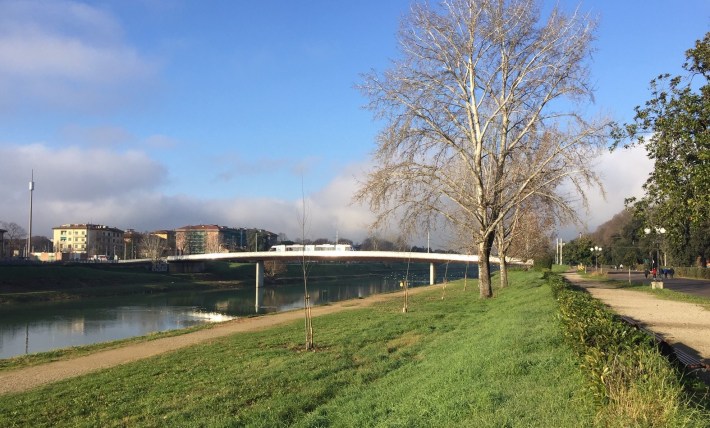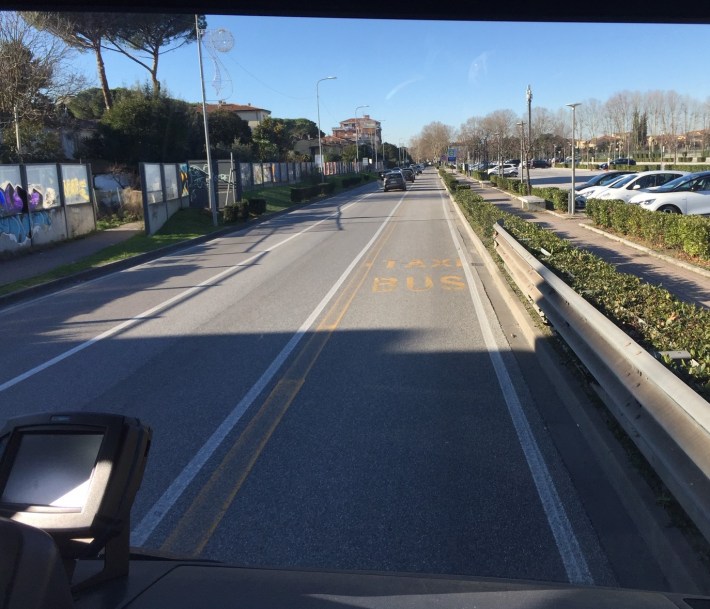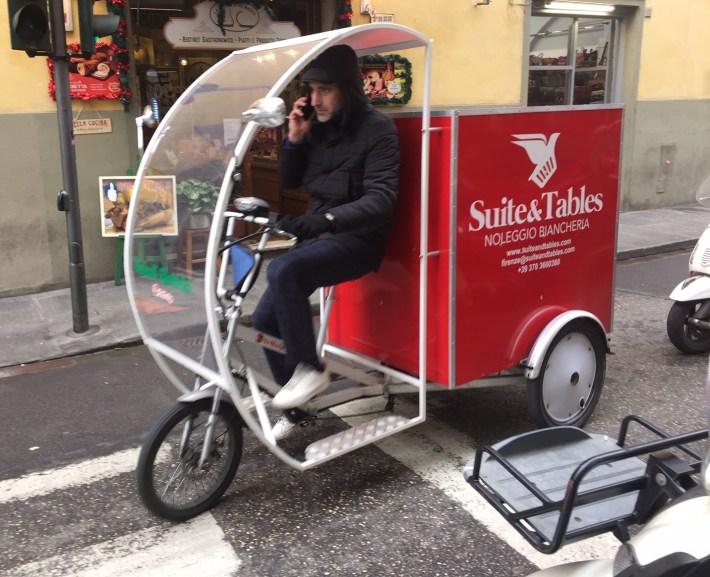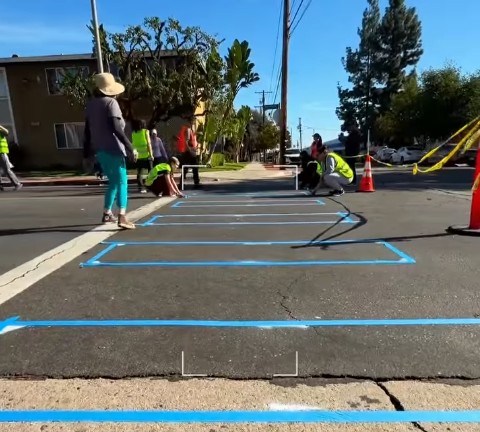Travel is a good way to see what makes cities tick. My family recently spent a couple of weeks vacationing in central Italy. The trip showed me a number of urban best practices that could potentially be applicable to Los Angeles.
My time in Italy was brief, so this article is not meant to be any kind of conclusive study of Italian urbanism. It's just my observations and thoughts. Apologies for places where these run pretty shallow. (For what it's worth, here are similar observations from my vacation in Mexico.)
We spent time in Rome, Pisa, Calci (a small town just outside Pisa), Lucca, Venice, and Florence.
Small Scale Makes For Great Walkability
Great walkability comes with small scale streets. Venice, a car-free city, has these all over - but all the Italian cities we visited had great small streets dominated by walking.

Similar to Los Angeles and Mexican cities, I saw too many spaces that were dominated by cars. Huge numbers of people walk in these tourist destinations - even in the January off-season when we visited. Many popular tourist areas feel like a crowded hub during a CicLAvia. Still many of the most walked spaces - including tiny one-lane streets and many small plazas - sacrificed a great deal of space to drivers and to parking.

While there were lots of pedestrian-oriented streets shared with occasional cars, there were also numerous car-free streets.

In Florence, one tool to enforce car-free spaces is bollards. That city has plenty of permanent bollards keeping drivers out of pedestrian spaces. The bollard barriers allowing pedestrians and cyclists to easily pass. Florence also uses many retractable bollards that block drivers during certain times of day or days of the week. I spotted some retractable bollards with flashing red lights for nighttime visibility.

In Rome, one of the main streets - Via del Fori Imperiali, located just north of the Coliseum - was closed off to cars on Sundays, when it was filled with tourists on foot.
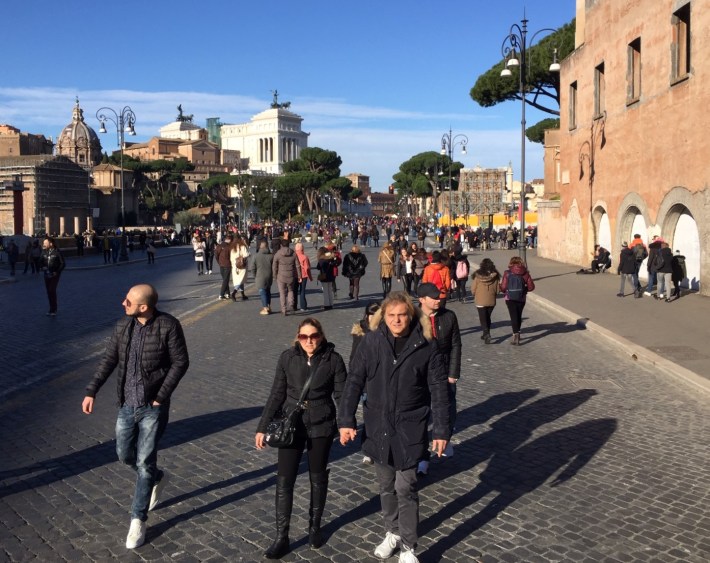
This made me think about Los Angeles' tourist destinations. Portions of places like Hollywood Boulevard could be closed off to car traffic during the day on certain days - perhaps every Saturday and Sunday from May through September - generating safer and more enjoyable conditions for both tourists and locals (while allowing for deliveries, etc. at off-peak times.) Retractable bollards could allow for weekday and early morning car access, while keeping cars out at select times. Groups including Streets for All are pushing for permanent closures of parts of Hollywood Boulevard; one possible interim option might be to pedestrianize Hollywood Boulevard first for certain recurring days and times.
Other Southern California areas that might have weekly or seasonal pedestrian-only times:
- some downtown Los Angeles streets (as already happens when the Farmers Market takes place on 4th Street) - perhaps Broadway, Grand, and/or others
- parts of Santa Monica's Ocean Avenue, Venice's Main Street and other beachfront areas,
- part of Lankershim Boulevard in North Hollywood
- parts of Pasadena's Colorado Boulevard
There would need to be plenty of coordination with stakeholders, businesses, transit agencies, etc., but it opens up some possibilities when streets can have different priorities at different times of the day and different days of the week.
Rail Observations: Inter-City Conventional and High-Speed Rail
Though I've read and written about high-speed rail, I hadn't actually ridden it until my Italy trip. There are various flavors of high-speed rail. California's under-construction high-speed rail is designed to travel at 220 miles per hour. New high-speed rail generally goes at least 160 mph, though retrofitting existing rail to high-speed can be 120 mph. Amtrak Southern California trains like the Surfliner get up to around 80 miles/hour on some stretches.
Italy is not among the fastest of the fast train countries (that would be France and Japan), but rail travel there was very fast, and very convenient.

The top speed I experienced was about 155 miles/hour - on one leg of a ~3-hour ~160-mile trip from Venice to Florence.
I have to confess that while I was excited to actually try high-speed rail, I wasn't completely wow-ed by the experience. Sure, it was convenient, and fast. But it was hard to feel much of a difference between basic fairly-fast inter-city trains and actual high-speed trains.
While it's not the primary aspect of rail mobility, the views were actually better on conventional rail we rode along the coast between Rome and Pisa. Much of the highest speed rail we experienced was in trenches and in tunnels. Not much of a view of the Italian countryside.

Though it was a one-seat, no-transfer trip, the speeds varied a lot on our ride from Venice to Florence. In many stretches, speeds exceeded 125 mph (200 kph), but in some places (seemingly mostly urban areas) there were periods where the train was only going 60-100 mph.
This is called "blended" service - fast, but technically not 100 percent truly high-speed. Blended service is common in many places, including France, England, and Spain. Trains can speed up and slow down based on speeds that tracks are built for. Trains can even switch between electric and diesel power. This blended service is the way that California High-Speed Rail plans to initially operate, with trains moving at 200+ mph through the Central Valley, and then continuing to the Bay Area and Los Angeles at slower speeds. Note that, as with my Italy trip (and contrary to some popular misconceptions including those held by the L.A. Times), blended rail service doesn't necessitate a transfer. Blended service can combine high-speed and conventional rail for a one-seat trip.
As I mentioned, Italian conventional rail was pretty fast. All the trains we rode were electric, powered by overhead catenary wires. This was true even for connections between smaller cities, including between Pisa and Lucca.
High-speed rail fares were a bit more expensive, so when we had time, we sometimes opted to take conventional trains. These all ran frequently and promptly. Some of them ran significantly faster than U.S. trains - especially between Rome and Pisa. That 220-mile trip took 3 to 4 hours, depending on whether we took a limited stop train. The conductor stated that the (non-high-speed rail) train was going "almost 200 kph" - about 120 mph (faster than nearly all trains in the United States.)


Rail Observations: Subways and Streetcars
We mostly got around primarily by walking, but did ride the subway and streetcar in Rome - and buses in Rome, Pisa/Calci, and Lucca.
I confess I only used the Rome subway once. On board displays were helpful and clear.

Rome streetcars (and buses) were very convenient for accessing the place where we stayed in the southern Rome Trastavere neighborhood. All upcoming stops were clearly shown on signs at stops.


Though we didn't ride the streetcar in Florence, I was impressed with the Ponte delle Cascine bridge - about a mile and a half east of the central Ponte Vecchio bridge. The Ponte delle Cascine bridge is car-free, carrying streetcars as well as pedestrians and cyclists. Imagine if the Gold Line Bridge over the L.A. River had included an attached bike/walk path connecting Lincoln Heights to Chinatown, including to Gold Line stations and to the L.A. River bike path.
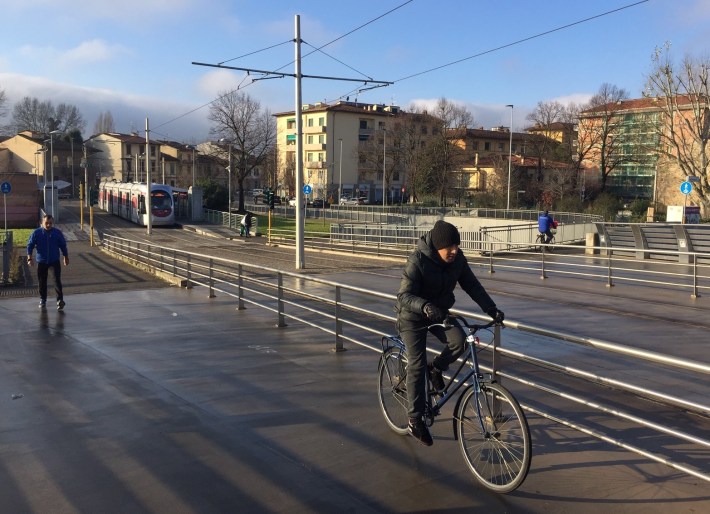
Bus Transit
Buses were convenient in the Italian cities we visited, especially for getting from the central city to outer neighborhoods.
I was impressed with the coverage. Italian buses went to small hill towns above Calci - running on one-lane roads in some places. While urban locations were served by full-sized and longer articulated buses, windier out-of-the-way routes were served by smaller shuttle buses.

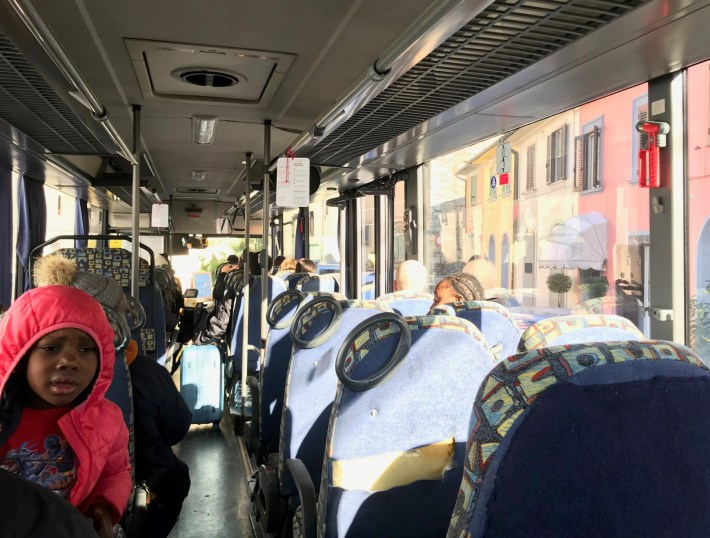
In some places in Rome, buses and streetcars shared the same lane - including shared stops. In Pisa, buses and taxis shared a dedicated lane.
Many bus stops featured electronic real-time arrival information. These seemed to be most prevalent at mid-route locations - not at the dense heart of the city, nor at the outer near-suburban end of bus lines.

Outer area bus stops had basic schedule information posted. We stayed at a friend's place in the small town of Calci - nearly seven miles from the center of Pisa. The location was served by two bus lines which each ran hourly outside of commute hours.

The bus station in central Pisa was configured like a rail station, with four bus "tracks" and an at-grade pedestrian "concourse." Though the site included a large bus yard, the station area felt compact, legible, and very easy to use. Southern California bus hubs like El Monte, North Hollywood, LAX, etc. feel somewhat more spread-out.


Bicycles in Italy
We didn't bike in Italy. Nonetheless, I have some observations on how bicycling appeared to be working there.
In outer locations, there were a fair number of recreational riders, on road bikes and wearing athletic garb.
In cities, bicycling was more practical transportation, though there are some recreational bicycle paths.


Most of the bicycles I observed were cheap practical city bikes, many with racks and child-seats. Locals mostly rode these bikes slowly on pedestrian-rich streets.

Of the places we visited, the city that had the most cycling culture was Florence. Cyclists largely shared pedestrian-rich spaces, through Florence also had some protected bikeways outside of the densest part of the central city. These include Ponte delle Cascine bridge (above) and others.
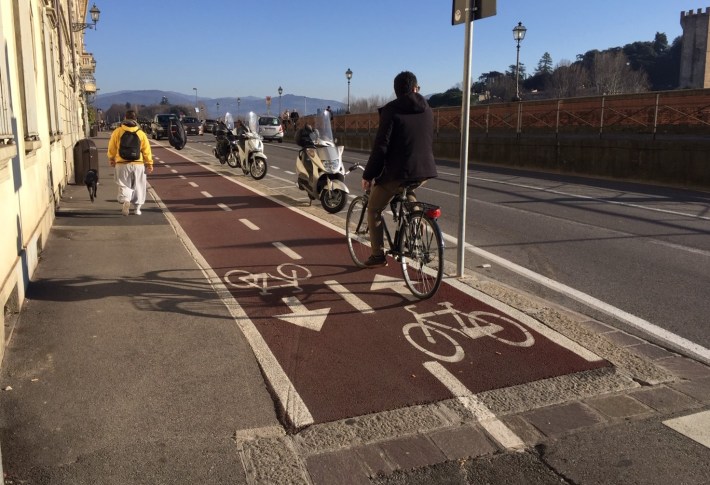
Florence had lots of bike parking - mostly on-street bike corrals, which were chock-full of practical bikes.
In addition, there were a number of cargo bikes being used for delivery work. Some of these appeared to be electric-assist powered. These small-scale delivery vehicles match the small scale of the streets.
All in all, these parts of Italy were very conducive to car-free travel. Walking predominates travel in cities, and fast convenient trains carry travelers easily between cities.





